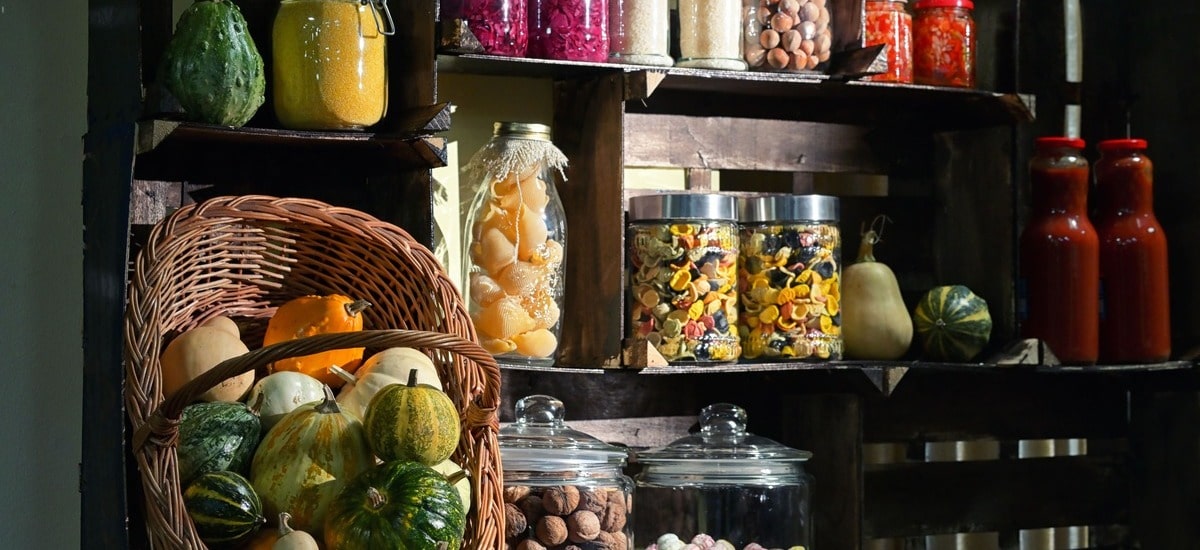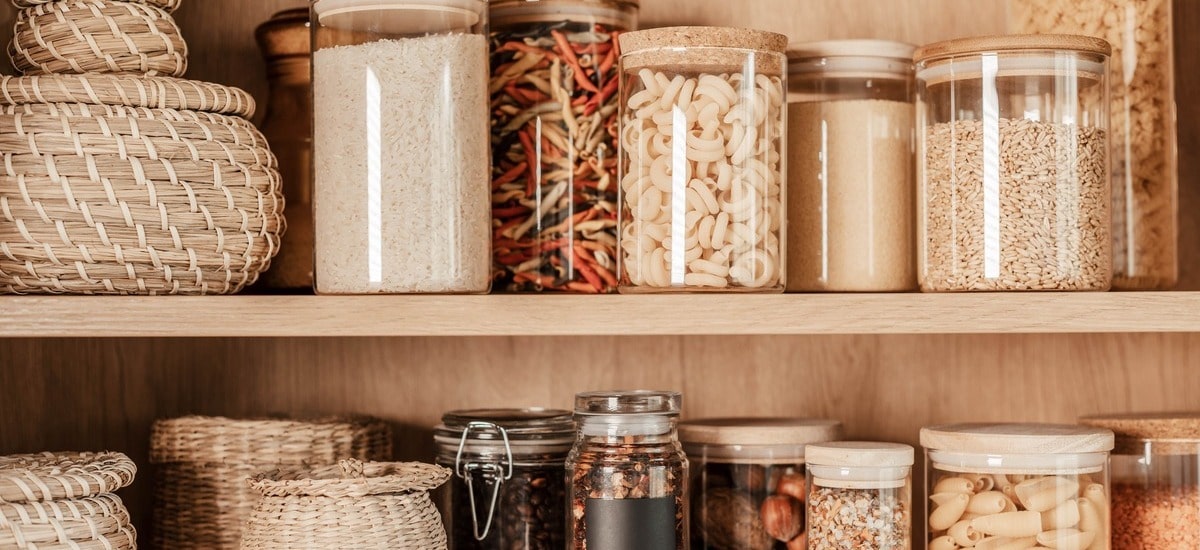Shelf Life: How to Extend the Freshness of Your Pantry Foods
If you're like most people, your pantry is home to a variety of foods that you use regularly. But did you know that you can increase the shelf life of many of these items by following a few simple steps? In this blog post, we will discuss some tips for keeping your pantry foods fresh and delicious for longer! Here is your guide for your next grocery run so that your pantry is well-organized and stocked for a year/more.
What Does a Good Pantry Consist of?
A pantry is a room in a house where food and other household supplies are stored. The word "pantry" is derived from the Old French word "Paneterie", which means bread store. A typical pantry would include shelves for storing non-perishable food items such as canned goods, dry goods, and spices. A pantry can also be used to store other household supplies such as cleaning products and paper goods.

A well-stocked pantry can be a lifesaver when you're short on time or money. Having a few staple ingredients on hand can help you whip up a quick meal or snack without having to run to the store. Here are a few items that should be in every pantry:
-Canned fruits and vegetables: This is an easy way to add healthy nutrients to your diet.
-Dry goods: Pasta, rice, and cereal are all great staples to have on hand.
-Spices: A few basic spices can go a long way in flavoring your food.
-Condiments: Ketchup, mustard, and mayonnaise are all essential condiments.
-Baking supplies: Flour, sugar, and baking powder are must-haves for anyone who likes to bake.
-Canned soups and sauces: These can be great for quick and easy meals.
-Non-perishable snacks: Granola bars, trail mix, and fruit bars are all great options.
Difference Between a Pantry and a Larder
A pantry is a small space used to store food and supplies. A larder is a larger, more organized space for storing food. Pantries are usually found in the kitchen, while larders can be found in the kitchen or elsewhere in the house. Larders are often better equipped than pantries, with shelves and cupboards to keep things organized.
There are a few key ingredients that every larder should have: salt, sugar, flour, olive oil, vinegar and butter, milk, pastry, and meats which are not included in a pantry. Food that lasts the longest at cooler temperatures is generally stored in a larder. They have been used for a very long time to store foods including butter, milk, pastries, and meats.
Larders have thick stone shelving and work surfaces, typically constructed of marble or slate. These are frequently built into exterior walls because they maintain a lower temperature. The north or west sides of the house, which receive less sunlight, are typically where original larders can be located.
Pantries are typically used for everyday items, while larders are reserved for special occasion foods or bulk items. So, if you're looking to stock up on food supplies, a larder is the way to go. But if you just need a place to keep your snacks and spices, a pantry will do the trick.
One of the most important things to remember when stocking your larder is to buy in bulk. Although it might seem like a no-brainer, many people fail to take this advice.
Increase the Shelf-Life of your Pantry Staples
So, how can you increase the shelf life of your pantry staples? Here are a few tips:
-Keep them in a cool, dark place: This will help to extend their shelf life and prevent them from going bad prematurely.
-Check the expiration date: This may seem like an obvious one, but it’s worth checking the expiration date on your pantry staples before you use them. If they’re close to expiring, you may want to use them up sooner rather than later.
-Store them in airtight containers: This will help to keep pantry staples fresh for longer and prevent them from going stale.

-Use them before they go bad: This may seem like a no-brainer, but it’s worth mentioning. If you have pantry staples that are close to going bad, try to use them up in recipes or meals so that they don’t go to waste.
-Invest in longer shelf-life products: Products such as canned condiments, rice, flour, jams & jellies, nuts, oats, spices, quinoa, tea bags, vinegar, powdered drink mixes, pasta (dry), honey, vinegar, olive oils, lentils, and beef jerky.
-Freeze your Products: Products that can be frozen should be because it stops the forming of microorganisms and can nearly eliminate these germs if frozen below -18°C. This can help prevent mold and bacteria from growing in your grocery.
-Drying your Products: It is a time-tested and proven means of keeping your product fresh. Your product's shelf life is greatly increased by removing moisture from it. Free water will become entangled and unavailable to microorganisms if excessive salt and sugar solutions are added to the package. Because of this, jams and marmalades with high sugar content don't need to be refrigerated.
Hopefully, these tips will help you to increase the shelf-life of your pantry and maybe reduce your monthly/weekly/daily expenditure on groceries if you are on a budget.
If you're looking to stock up on food supplies, a larder is a way to go. But if you just need a place to keep your snacks and spices, a pantry will do the trick. Remember to buy in bulk and store your pantry staples in airtight containers to extend their shelf life. It is also important to understand your frequency of consumption of the groceries and assess if a pantry or a larder is required. With these tips, you'll be able to keep your pantry staples fresh for longer.













